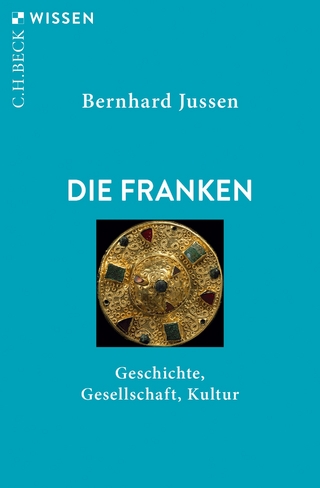
Zwischen Konvention und Rebellion
V&R unipress (Verlag)
978-3-89971-847-8 (ISBN)
Zwei Frauen der papsthöfischen Gesellschaft des 17. Jahrhunderts, die das Leben am Papsthof aktiv mitgestalteten, stehen hier im Zentrum: Anna Colonna Barberini und Maria Veralli Spada. Anhand ihrer Alltagskorrespondenz werden sie in ihrem familiären, gesellschaftlichen, sozialen und politischen Netzwerk dargestellt und miteinander verglichen. Man begegnet einerseits Donna Anna, der stolzen Colonna-Tochter, die Macht und Status aus ihrer altadligen Herkunft legitimierte und sich ihrem Ehemann, dem Papstneffen Taddeo Barberini, stets überlegen fühlte. Auf der anderen Seite steht Marchesa Maria, die mustergültige Vorsteherin des Kardinalshaushalts der Spada und engste Vertraute des Familienoberhaupts Kardinal Bernardino, die mit ihrer Loyalität und Zuverlässigkeit den gesellschaftlichen Aufstieg der Spada maßgeblich mitgestaltete.Die Autorin lotet weibliche Handlungsräume und -möglichkeiten im höfischen Leben in Europa aus und leistet so einen wichtigen Beitrag zur geschlechtergeschichtlichen Forschung. Two women, members of 17th century papal court-society and actively involved in influencing life at the Papal Court, are the focus of the dissertation: Anna Colonna Barberini and Maria Veralli Spada.An examination of the day-to-day correspondence of the two nobelwomen allowed the author to illustrate and compare the family, societal, social and political networks of the two protagonists. The results differ for the two: On the one hand, we get to know Donna Anna, the proud Colonna daughter, who legitimizes power and status through her old aristocratic origins and considers herself superior to her husband, the Pope's nephew Taddeo Barberini.On the other side is the Marchesa Maria, the exemplary head of the Cardinal House of Spada and close confidant to the head of family, Cardinal Bernardino, who played a key role in promoting the societal emergence of Spada through her loyalty and tenacity.
Dr. Carol Nater Cartier hat an der Universität Zürich Allgemeine Geschichte und Germanistik studiert und anschließend bei Prof. Dr. Volker Reinhardt an der Universität Friburg i. Br. promoviert. Seit 2009 leitet sie das Museum Altes Zeughaus in Solothurn (Schweiz).
Two women, members of 17th century papal court-society and actively involved in influencing life at the Papal Court, are the focus of the dissertation: Anna Colonna Barberini and Maria Veralli Spada.An examination of the day-to-day correspondence of the two nobelwomen allowed the author to illustrate and compare the family, societal, social and political networks of the two protagonists. The results differ for the two: On the one hand, we get to know Donna Anna, the proud Colonna daughter, who legitimizes power and status through her old aristocratic origins and considers herself superior to her husband, the Pope's nephew Taddeo Barberini.On the other side is the Marchesa Maria, the exemplary head of the Cardinal House of Spada and close confidant to the head of family, Cardinal Bernardino, who played a key role in promoting the societal emergence of Spada through her loyalty and tenacity.
| Erscheint lt. Verlag | 20.7.2011 |
|---|---|
| Zusatzinfo | mit 27 Abbildungen |
| Verlagsort | Göttingen |
| Sprache | deutsch |
| Maße | 163 x 245 mm |
| Gewicht | 630 g |
| Themenwelt | Sachbuch/Ratgeber ► Geschichte / Politik ► Mittelalter |
| Geisteswissenschaften ► Geschichte ► Allgemeines / Lexika | |
| Geisteswissenschaften ► Geschichte ► Allgemeine Geschichte | |
| Schlagworte | 17. /Allg. Geschichte • Adel • Gender • Hof (fürstl.) • Hof (fürstlich) • Höfische Gesellschaft • Jahrhundert • Jahrhundert, 17. /Allg. Geschichte • Netzwerk • Papsthof • Rom /Allgemeines |
| ISBN-10 | 3-89971-847-X / 389971847X |
| ISBN-13 | 978-3-89971-847-8 / 9783899718478 |
| Zustand | Neuware |
| Haben Sie eine Frage zum Produkt? |
aus dem Bereich


